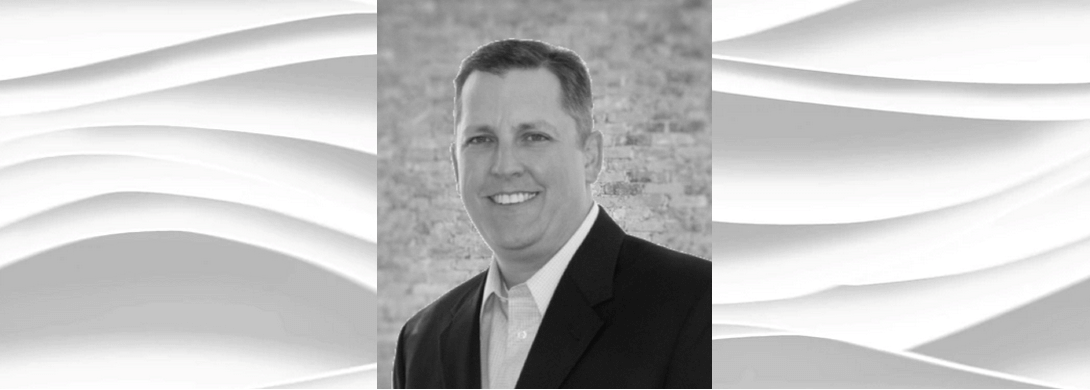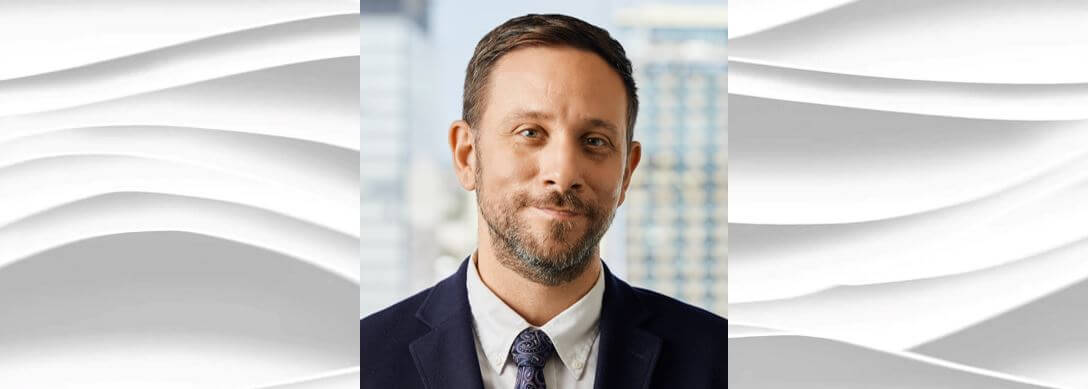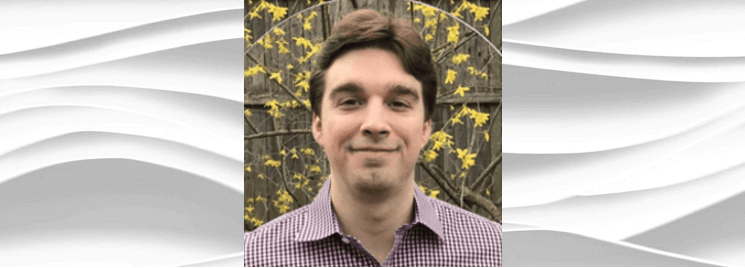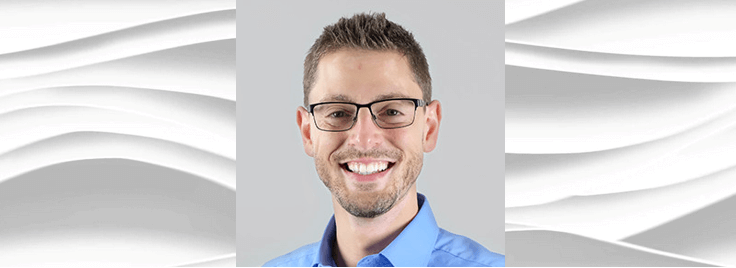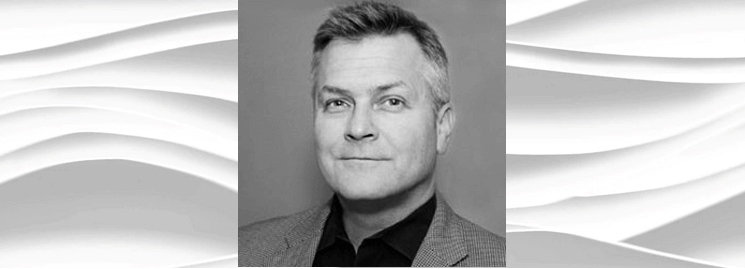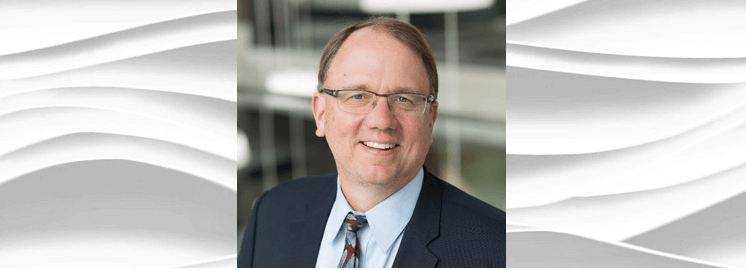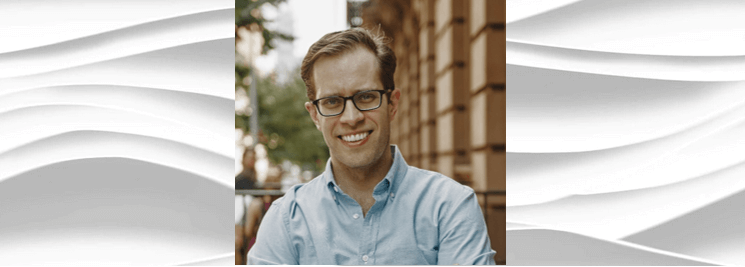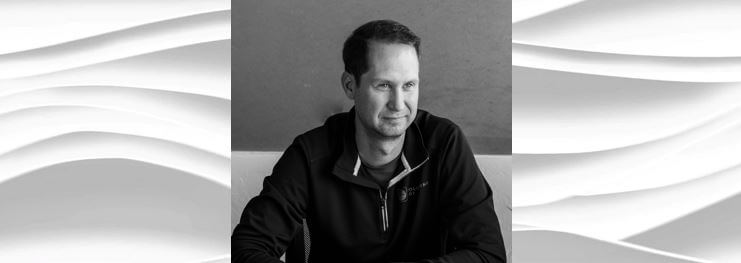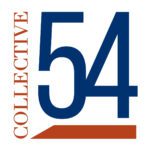It is harder to sell a service than it is to sell a product. But the more you know about your client, the easier it is to market and sell your service. The better you understand them, the better you can serve them. On this episode, Jay Mitchell, President & Founder of Mereo LLC, shares how his team built their Ideal Client Profile and the results of this highly targeted approach.
TRANSCRIPT
Greg Alexander [00:00:15] Welcome to the Pro Serve podcast with Collective 54, podcasts with founders and leaders of boutique professional services firms. For those that are not familiar with us, Collective 54 is the first mastermind community dedicated entirely and exclusively to the boutique pro serve segment. And for those that want to grow, scale and maybe someday sell their firms. My name is Greg Alexander and I’m the lucky guy to lead this group. I’m the founder of Collective 54 and I’ll be your host today. And on today’s episode, we’re going to talk about creating the ideal client profile. Now, before you roll your eyes in the back of the head and hit delete and say, I already got one of those, I’m going to challenge you because everybody says they have one, but the ones they have aren’t very good. They’re not kept up to date. And your ideal client profile changes all the time. So this is something that you have to keep top of mind. So it’s a good refresher. And then back to the basics fundamental episode. And we’re really lucky today. We’ve got a role model, role model, a member, Jay Mitchell. And Jay is does this better than most. And he’s going to drop his wisdom on us on how to pull this off and how to keep this thing current and use it and your pursuit of growing, scaling and selling your firm. So, Jay, it’s great to see you. Thanks for being here. And please introduce yourself to the audience.
Jay Mitchell [00:01:34] Thanks, Greg. Good to see you as well. I appreciate the introduction. As you said, I am a member of Collective 54 and had the opportunity to do that for the last two years. It’ll be two years actually later this month. So it’s been a fun ride and I’ve learned a lot from you and some of the other members. I started my firm Mario back in 2007, having led sales and marketing teams for mostly technology, but some service companies for about 15 years prior to that and just had an opportunity to jump in here and and help a bunch of other companies through a consultative approach as opposed to doing it as an employee approach. And so then a really fun ride and and I learned a lot along the way. It’s been fun.
Greg Alexander [00:02:16] And Jay, what’s a typical type of client that you serve and what’s the service you provide that client?
Jay Mitchell [00:02:23] So for companies that are wrestling with different aspects or that go to market, they’re not getting the win rates they want to get. They’re not seeing the the deal velocity that they want to get. The average deal size is not large enough. We come in and provide a suite of revenue performance services and those will end up being things like ideal client profiles and who do you go after and what’s the value proposition and the value messaging that you would use that also lots of times incorporate sales methodologies and sales process. You know, the different aspects of go to market are at the heart of that. A lot of that Greg ends up being what’s a lot at the intersection of the sales product and marketing triangle there. And so you’ll see things like product marketing or sales enablement might be program leaders for our engagements.
Greg Alexander [00:03:11] Okay, fantastic. So the ideal client profile, so our audience as you know, because, because you’re a member, they’re founders, co-founders, senior leaders of boutique crossover firms, which means they don’t sell a product, they sell a service. And it means that they really have to get tight on who their ideal client is, because as a boutique, we can fall victim to saying, Well, everybody could be a client. You know, if you think about the way that you just described your services, I mean, who doesn’t want to improve their win rates? But if you try to go after everybody, you’re not going to be very successful. And getting super tight on who you want to serve is really important. Yet for some reason, our members pencil whip this from time to time and for the life of me, I can understand. I absolutely could not. I can’t get why people would do this, so let’s start there. Why do you think the ideal client profile is not treated with the respect that it needs to be inside of a small service firm?
Jay Mitchell [00:04:13] I think, frankly, whether it’s a large organization or a small services firm, either one, it’s not treated with the respect due. Yeah, as a part of that and I say that because a large organization needs focus too. They’ve got a lot of resources they’re deploying and you can have too many actions go on. A small firm, like most of us in the collective are. Greg If we have precious resources that we’ve got at our disposal and as the owners and operators of those firms, we’ve got to be very discreet in how we’re applying those resources. And frankly, the cornerstone of how you deploy those resources is based on the ideal client profile. With that as a services firm, it’s to me, as I mentioned, a lot of what we do is at that intersection of sales, marketing and product, it drives those three aspects of an operational business, whether that’s a product firm or a services firm for service organizations. It’s, you know, what are the. What’s the staffing that you’re going to do? What’s the what’s the territory coverage model that you’re going to have, whether that’s sales or the the services team for the product team, it’s driving the product portfolio around that. So it has a it’s an integral part is the cornerstone really of what folks should be doing. Why people don’t do that is beyond me that it’s a repeat it’s a repeat offender over and over.
Greg Alexander [00:05:39] Yeah, it is. You know, so in some cases, people think they have it done and they what they basically have is a demographic profile. And that’s a start for sure. But it’s not that’s not in and of itself enough. The ideal client profile also includes the psychographic. So you get into things like wants, needs, desires, goals, objectives. You know, these are the things that you can’t see. You have to feel and you and you encounter them. When you begin your your your sales efforts, it’s easy to see things like in a database like industry, company size, job title, etc. and those things are important, but they, they’re only the starting point. So Jay, when you when you work with your clients to deliver this for them, what is the process that you go through and how long does it take? And is it is it difficult? Is it easy? You know, kind of share with us if somebody does want to go do this, what are they getting into?
Jay Mitchell [00:06:37] Greg, let me let me preface answering how we do it by what is kind of the output. Because you mentioned the the demographic and the psychographic elements of that ideal client profile. And when we’re looking at that, we’re looking at both both factors. They’re right. The demographic end up being things, as you know, that you can pull from a database industry size. It can be number of locations, it could be number of employees. Things like that can be very good factors when you’re doing that. But if you look, you’re very familiar with the table of contents of this book called The Boutique. I think you’re at that table. The second chapter is ideal client profile. It’s the cornerstone, but there’s a chapter before it called The Problem and the Psychographic Pieces are about how does the problem come to life with. Right? And when you take those demographic aspects and you say, let’s apply that to the big vision, the bigger problem that we’re solving there that ultimately starts to turn into what are the use cases at an organizational level, at a persona role base level, it turns into what are the business, financial and personal pains that those particular members of the buying committee or are encountering as a part of that. That’s how you get people off status quo. When that’s the case is you got to go activate, you know, you got to turn it, like you said, from a vitamin into a painkiller. I won’t do that unless you get down to the pain associated with that and that psychographic program profile. That’s the triggers. That’s the attributes. When you look at that, to your question of how we do it, it’s a lot of interviews. It’s not just interviewing the internal team. What are they having? Wins and losses is a part of that. So you end up interviewing the existing customers or those that we wanted to be customers of the other clients. You’ll also we’ll do some of the analysis, some of the market segmentation aspects of that as well. But you combine that with the voice of the customer. One of my favorite things we do, you talk about win loss analysis. A lot will go to the voice of the customer, not just with wins and losses, but not. We have a network within Merrill of about 300 executive decision makers. So these are sea BP director level buyers. And you know, in the finance function, in the i.t function or in a manufacturing function or supply chain function or something like that, and we’ll go talk to them. And we haven’t gotten introduced to those people by our by our customer, by our client. We’ve gotten introduced to those through our network or through people we know. And you can start to really see what why would they even look at doing something? What’s the trigger point or the catalyst for why they would explore and what would they look like for their buying journey? So go turn to the voice of the customer through win loss. Go turn to a through the internal team, look at the analytics and then go look at just general good ole focus group market data. Yeah, and part of that as well. And those are the aspects that we’ll use to build that. The next step then is then go build the pain matrix associated with all those, right? And so that problem turns into the pains once you filter it through the profile.
Greg Alexander [00:09:47] You know, you mentioned getting people off the status quo and this is such an important point to bring up, and it’s a good way to illustrate how somebody would use an ideal client profile. By my estimate, that’s just Greg’s opinion. About 50% of the times when a services firm loses a deal, they’re not losing to another service provider. They’re losing to do nothing. Meaning the project, in a way. Yeah, because status quo one. And to get somebody off a status quo, you have to convince them to change. And humans don’t like to change is just it’s perceived to be too much work and a pain in the butt and blah blah blah. So if you don’t really understand the status quo and how the status quo is unsatisfactory and you can’t get to a pain matrix that you talked about, then you’re really not going to grow. Scale and exert you for some days is not going to be enough work and the ideal client profile is what gets you to that understanding so that when you’re having a conversation with a prospect which it’s hard to get meetings with prospects of when you have one, it better be a good meeting. And the way you make it a good meeting is you prepare properly. And one of the ways you prepare properly is a review of an accurate, current, ideal client profile so that what comes out of your mouth makes sense to them. So it takes me to a question, Jane, which is how often do you recommend people update this?
Jay Mitchell [00:11:11] But. Once a quarter to twice a year.
Greg Alexander [00:11:15] Yep.
Jay Mitchell [00:11:16] And that’s it. I use that as a variable there because there’s a rhythm, there’s a cadence that you’ve got to get into, and once a quarter, you’re fine tuning it. You know, once a year you’re doing a macro level on that. But if you can’t do it in between that half a year, somewhere in that range, that once a quarter to one, once every two quarters is minimal as a part of that.
Greg Alexander [00:11:38] Yeah, I think that I think that’s good for us. And I think maybe, maybe the younger companies that are in the growth stage, they’re still trying to figure it out. Maybe they do it more frequently because they haven’t really figured out yet who they’re serving in the scale stage. Maybe you do it less frequently and maybe it’s based on a certain thing. Like maybe maybe you’re going into a new market or maybe you’re launching a new service and therefore you drive the need for that. I can tell you that when you get to the exit stage, intelligence, people can ask you for it. And they’re going to they’re going to say, how big is your market?
Jay Mitchell [00:12:10] Exactly. And they’re going to you’re going to have to not just give the attributes of it, but you’re going to have to give the sizing around that of the part of that and the sizing. Lots of times go back goes back to the demographics, the demographic aspect of it. The thing that that doesn’t change as often, right? That that that’s why I say you may do the, the hard coding, the hard work on the demographic aspect of the profile, maybe once a year on that, maybe every half year. But I guarantee you the attributes of the psychographic are changing a lot more frequently than that. I mean, we’re still in 2023. I mean, the market none of us saw COVID well, but psychographic changed in a moment there with that. Right. And we had our best six month period we ever had. And even since then, the second half of 2020, just because people had extra money to spend with that. Right. They didn’t have travel sales, travel budgets to use. And they and those sales leaders were saying, I’m not letting this go to waste. Let’s put it to use through consulting services. So there was unmet there was pent up demand there that we were able to tap into. That’s a that’s a one time event. Hopefully it’s a one off event. Yeah, that’s right. But that’s a psychographic piece you’re tapping into for a period of time there. Yeah.
Greg Alexander [00:13:25] I’ll share store a story with the audience to kind of bring this to life a little bit. So the reason why the number 54 is in the name collected 54 is that’s the industry code for professional services. And an industry code is one of the elements of the demographic profile, but there’s approximately 1.5 million firms in that code. There’s no way that we could go after 1.5 million. And even within each firm, these firms are often partnerships with his co-founders. So maybe there’s two or three people that would be interested in our services. So let’s say that the addressable market is 4 to 5 million people. I mean, it’s impossible to go after that. So we just went through because here it is at the time of this recording, it’s November of 2022 and we’re planning for 2023 and we’re trying to figure out where are we going to deploy our limited resources as a small firm, a small boutique ourselves. And we went we’ve had 17 exits in Collective 54 in about three years. When I say that, when I say we, I mean 17 members have exited and we’ve had a ringside seat. Of those 17, nine of them, nine are in customers custom software development. And until we went to refresh our ideal client profile, we didn’t know that like it was right under our nose. But we did know that. And we said, What’s going on here? Why? Why is the customer software development segment within the 54 segment doing so well? Well, as they say, software is leading the world and it’s huge demand for it. So these people are scaling and they’re running into scale problems. So they’re they’re a natural fit for what it is that we do. So guess what? We’re now being much more deliberate and intentional and having conversations with software development shops because of that knowledge. That’s an example for the audience members of how powerful this tool would be. And Joe, you went through this one time event with COVID, and COVID changed the sales strategy for pretty much every company in the world. I mean, we used to drive around in our cars and go meet people face to face. Now we sell over Zoom.
Jay Mitchell [00:15:30] So, yeah, you don’t get sales guys don’t need a gas card anymore.
Greg Alexander [00:15:33] Exactly. I’d hate to be the guy selling the gas card. So how how did your client profile change as a result of COVID? And was it a one time thing or are there some things are going to persist?
Jay Mitchell [00:15:48] The demographic aspects didn’t change that much as a result of COVID. It was the psychographic and it was just looking at some different trigger points related to that. If you break down Greg, our our primary ideal client profile, it looks a little something like this. We will we will focus on large enterprise companies, primarily technology oriented companies. So enterprise software, SAS related, those are going to be most of the time north of $1,000,000,000 because there’s not that many enterprise software. There’s not that many companies between 100, 100 million and a billion, anyway, kind of thing. And so the large enterprise companies where we’re going in solving a divisional problem, then you’ve got those under 100 and then you have those under 25 million. So we break that technology, only band down into those three buckets of 25 and below million, below 25 to 100, and then basically over a billion because the 100 million to 1000000000, there’s just not that many in there. Then you take those and we’ll apply private equity, particularly to take that 25, 200 million. And we’re looking for private equity backed portfolio companies is another key trigger point. Again, psychographic trigger that we’ve seen is a recent funding round by private equity. We were actually doing some 2023 planning and I’ll give you the numbers because I don’t know that don’t have a memorize yet. We were literally just looking to crunching this little bit this week. So in that 25 to 100 million revenue band for technology enterprise software type companies, there’s 3923 total companies in Zoom info that fit the bill on that. That’s not a massive number, right? But that’s plenty big.
Greg Alexander [00:17:28] I was going to say, yeah.
Jay Mitchell [00:17:29] Go after it. Right. Okay. You take the private equity that have done a funding round and there’s 399 of those who have done a funding round on that. Okay. So now we’re getting to like where we can go focus as a part of that. You take the that the text, the US of the US piece of that. Let me actually go back. There’s 39 and 23. There’s 720. I’m sorry that they’ve done private equity. Okay. I’ve done that. Okay. Within Texas, you and I live in Texas, there’s 38 that have done a recent funding round. They just do it. So that’s 1% of that. Now, do we want to capture more than 1%? Yeah, but you take that. My point is you take the universe and you start to segment that down and then it starts to direct your marketing campaigns.
Greg Alexander [00:18:17] And the priority.
Jay Mitchell [00:18:19] Yeah, account based marketing is a is a huge focus now. Right. A B2B. How are we going to apply all these marketing automation systems? It’s not that doing broadcast marketing, it’s very account based, targeted marketing. Like you got to get down to the 38 in Texas to do account is marketing right not even the 3923 it’s who are the 38 in Texas because I got one rep in Texas calling on those 39 accounts. Yeah. Part of that.
Greg Alexander [00:18:44] Right. And the tools can target like that now. Right. So again, it makes the I took my profile that much easier. You know, if you’re going to if you’re going to do some marketing automation systems, you can target by those 38, which is really good. Well, listen, we could talk about this forever. We try to keep these podcast episodes short. The extended conversation is the Friday Q&A with the members. And I’m really looking forward to to you hosting that for us in the upcoming weeks. I know it’s going to be well-attended. A lot of members going to have a lot of questions. So thanks for being on the show today and sharing what you know about this, using your own firm as an example. Plus, your clients clearly have some domain expertize here, so thanks for sharing with the group.
Jay Mitchell [00:19:26] Yeah, glad to be part of it. Thanks for the invitation, Greg.
Greg Alexander [00:19:29] Thank you. Great. All right. So if you’re not a member and you think you might want to be want to be in a community, meet great people like Jay, go to Collective 54 dot com and you can apply for membership. And if you’re not ready to be a member yet and you want to educate yourself and listen to more content like this, you can subscribe to Collective 54 Insights and you’ll get a weekly podcast and blog. You’ll get access to some charts that are based on our benchmarking data that are really interesting. And you can get a copy of our book, The Boutique How to Start Scale and Sell a Professional Services Firm. So check that out. And that’s the end of the show. And I thank you for listening and I look forward to the next episode.
